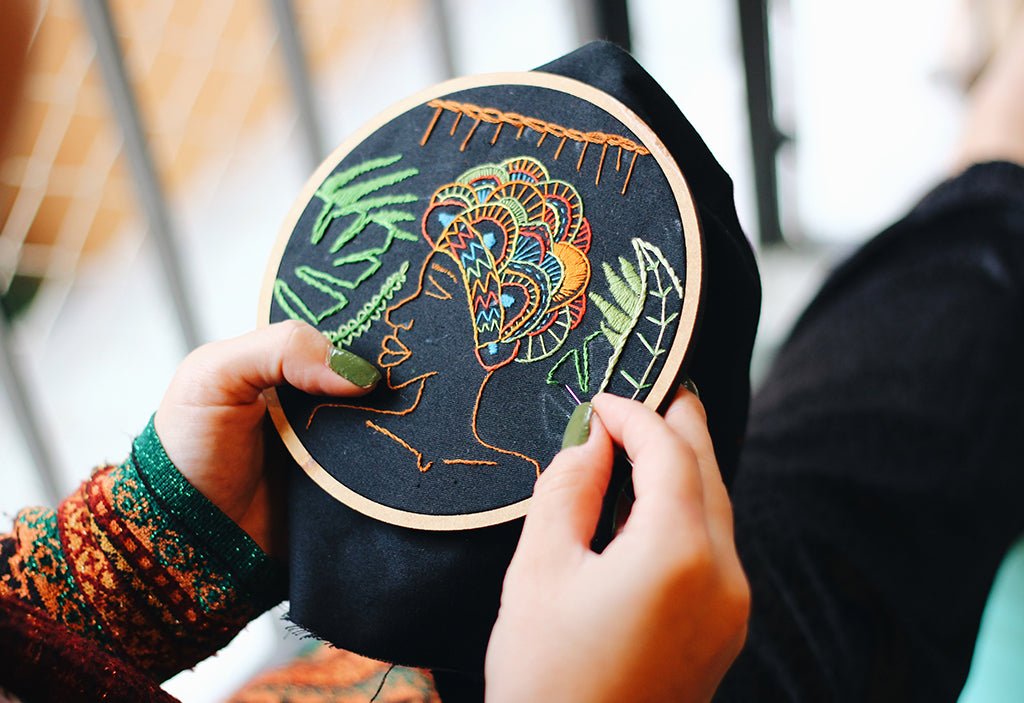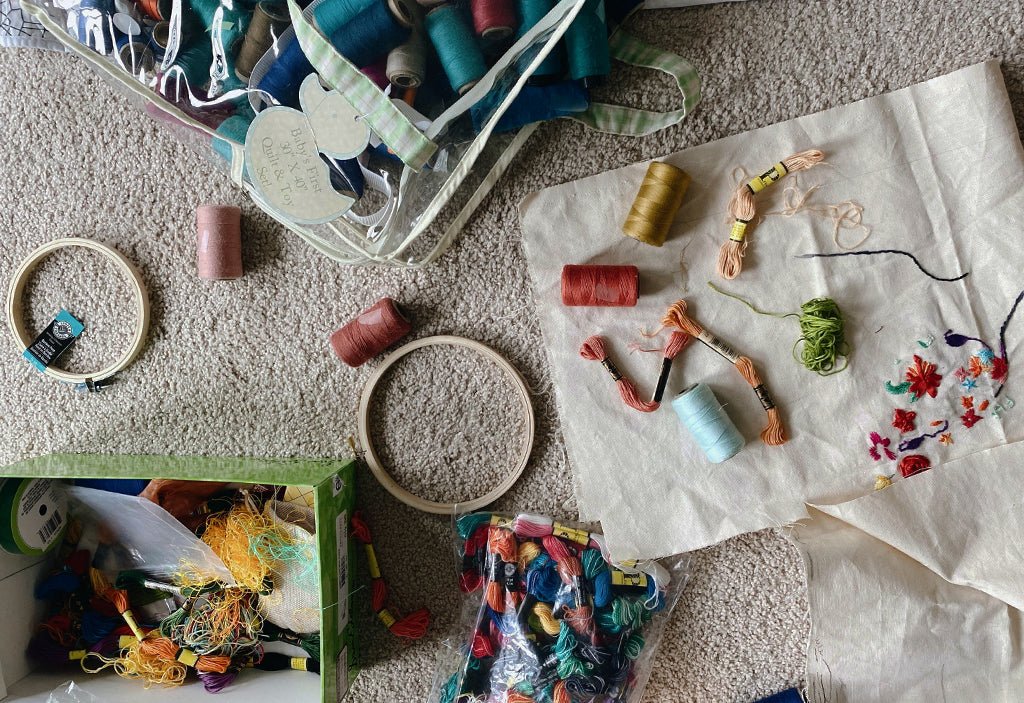When choosing an embroidery material, it is always exciting to work on your embroidery patterns. Before making a choice, it’s better to weigh your fabric and be acquainted with the colour of the fabric being used. It is a good idea to try as many of these transfer methods as possible and keep supplies on hand so that you will be prepared when the time comes. Buy embroidery fabric online and begin with the process.
Tracing Method
When your embroidery fabric is thin, you can directly transfer the designs on the fabrics using a light resource like a light box or window,and mark the lines using a chalk-based marking pencil or water-soluble transfer pencil or pen. It is the easiest method to do on the fabrics. This method is also known as thread tracing. Tracing works well on silk, wool, leather, canvas, denim etc. You just layer the paper on the top of your design, mark the outlines and stitch the traced design to the embroidery fabric using large running stitches. The best results are achieved by stitching simply while trapping the pattern with thread. Regardless of the stitch you use, make sure the stitches are closely spaced. By doing this, you will be able to finish the stitching more precisely and remove the paper more easily.
Water Soluble Stabilizer
When working on dark coloured embroidered fabrics and detailed designs, water soluble stabilizer is the best method to choose. The stabilizers are available in yards, rolls, and sheets. The fabric can be used to print directly on to the stabilizer. Once it has dried, you can place the stabilizer directly on the embroidery fabrics. When you have weaved through the fabric and stabilizer, you need to soak the embroidery in warm water so that it dissolves. In order to make this method work, you will need an embroidery fabric material that can be washed as well as embroidery floss that is colorfast.
Transfer Paper
Patterns can also be transferred to dark fabrics using carbon or wax based transfer papers, also known as dressmakers’ carbon paper. A powdery, colored ink is applied to one side of this lightweight transfer paper and the finished piece will wash out of it if it is used on fabric. You must always use a light-coloured carbon paper on dark embroidery fabrics and dark-coloured carbon papers on light embroidery fabrics. This method is best suitable for wool embroidery. In order to transfer the design using the transfer paper, lay the face of the fabric on a tough surface and place the transfer paper in the middle of the embroidery fabric, with the ink towards the fabric and pattern on the top. Then mark the design onto the fabric with an empty ball-point pen or a stylus. To transfer the design to the fabric, make sure you press hard enough with the stylus.
Hot Iron Transfers
Hot Iron Transfers come in a wide range of subjects and are ready to use patterns. They are usually printed in black, blue or grey ink. Make sure your fabric is ironed before placing your pattern. You will achieve a more uniform pattern transfer if you warm up your fabric with your iron. If a pattern is transferred with wrinkles, the pattern can be broken.
Prick and Pounce
Get your hands on embroidered fabric online and practice the method of Prick and Pounce!
Transferring intricate and fine lines onto fabric for embroidery is most accurate with the prick and pounce method because it allows you to reduce mistakes. Tracing paper with holes is placed on fabric (smooth side) and held in place with weights on the corners or by pins. If it is a small sketch, then the paper is held in place with one hand while the other rubs the ponage on.
At regular intervals of time, pins are inserted into a pattern. Once the design is fitted onto the embroidery fabric, a pigment powder is worked through the holes with a soft fabric pad in a pouncing motion. In this technique, tiny holes are punched in a pattern, and the fabric is placed onto the pattern. It is then pounced with powder that filters slowly into the tiny holes, leaving tiny dots on the fabric.



Leave a comment
This site is protected by hCaptcha and the hCaptcha Privacy Policy and Terms of Service apply.